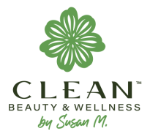Are You Confused By All The Different Forms Of Retinoids?
If you’ve ever ventured into the skincare world, you’ve come across the term retinoid at some point. And if you’re like most people, you might feel confused and overwhelmed by the many retinoid options available. Fear not; today, we’re here to shed some light on this ingredient and help you navigate the maze of retinoids.
First things first, what exactly is a retinoid? Retinoids are a class of chemicals that are derived from vitamin A. They have been widely studied and proven highly effective in treating various skin concerns, especially acne, wrinkles, and hyperpigmentation. Retinoids increase cell turnover, and according to an article from Harvard Medical School, they even reduce the appearance of fine lines and wrinkles and stimulate collagen production.

Now, let’s delve into the different forms of retinoids that you might encounter:
1. Retinol: This is the most well-known form of retinoid and can be found in many over-the-counter products. It is generally considered milder than prescription-strength retinoids and is a good starting point for those new to retinoids.
2. Retinaldehyde: This form of retinoid is one step closer to retinoic acid than retinol. It is typically found in more advanced and potent skincare products. Retinaldehyde is known for its ability to provide visible results with less skin irritation compared to more potent retinoids.
3. Retinyl Palmitate: This is a milder retinoid form often appearing in cosmetic products. While it may provide some benefits, it is essential to note that retinyl palmitate must be converted into retinol and then retinoic acid to be effective. This conversion process can limit its potency.
4. Prescription-strength retinoids: Tretinoin, adapalene, and tazarotene are some examples of prescription-strength retinoids. Dermatologists typically recommend these for more severe skin concerns due to their higher potency. According to an article by Stanford Medicine they are highly effective, due to the speed in which it increases skin cell turnover, but may also have a higher risk of side effects, including dryness, redness, and peeling.
So, which retinoid should you choose? It depends on your skin type, concerns, and tolerance. If you have sensitive skin or are new to retinoids, starting with a milder form like retinol or retinaldehyde may be a good option. Gradually increasing the concentration or strength as your skin builds tolerance is essential. If you have more severe skin concerns or are seeking faster results, a prescription-strength retinoid might be the way to go under the guidance of a dermatologist.
Remember, regardless of the retinoid form, using sunscreen daily is vital, as retinoids can increase sun sensitivity. Also, begin by using retinoids only a few times a week and gradually increase frequency to avoid potential irritation.
In conclusion, retinoids are undoubtedly a game-changer in skincare, but the variety of options available can be overwhelming. Understanding the differences between the various forms of retinoids and assessing your skin’s needs will help you make an informed decision. Retinol can be used in conjunction with other ingredients to increase results. For example, Face Time Cream has, in addition to Retinol, Collagen, and CBD. So, get ready to enjoy the transformative benefits of retinoids and bid farewell to skin concerns!

